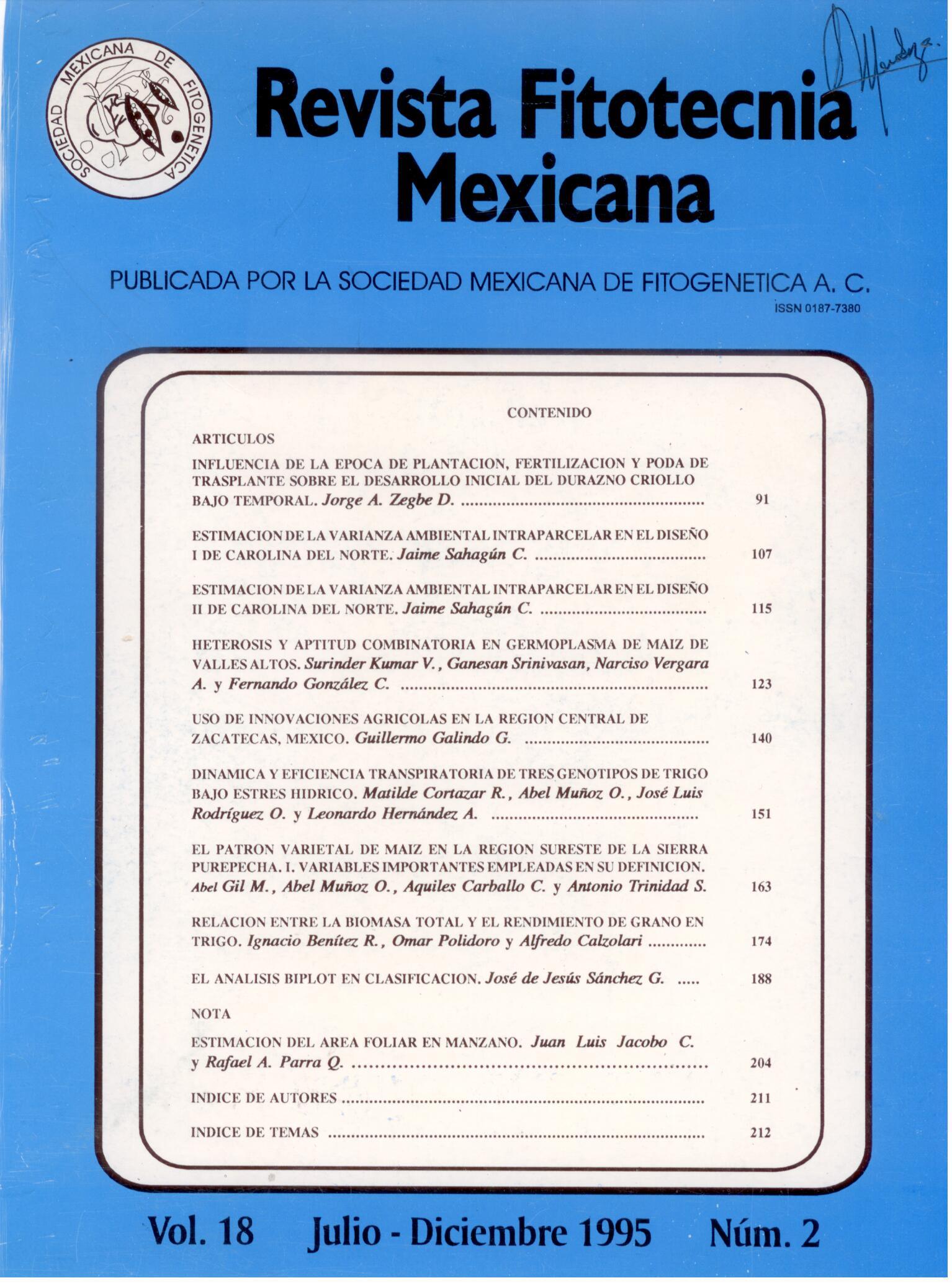VARIETAL PATTERN OF CORN IN THE SOUTHEAST REGION OF TIIE PUREPECHA SIERRA. L IMPORTANT VARIABLES USED IN ITS DEFINITION
Main Article Content
Abstract
To identify the variety pattern of maize in the southeast of the Purepecha Mountain Range, a set of 32 landraces (plus four controls) was studied. 1bat set was subdivided in four groups considering the grain color and the earliness classification designed by the farmers. The 36 varieties were evaluated under residual moisture conditions in the most common productive environments: a plain land and a hillside. Some of the variables measured were: days elapsed to 50% of male and female flowering and grain yield. It was concluded that the variety pattern in the zone is mainly associated with three characteristics of the varieties: grain color, length of the vital cycle and yield capability. Four components were identified: SLACK WHITE MAIZES (very late materials), useful on the hillsides; VIOLENT WHITE MAIZES (late materials), with better performance on the plains; YELLOW MAIZES (intermediate and late materials), adapted to both environments, mainly to the plain lands, but without surpassing the white maizes in any condition; BLUE MAIZES (intermediate, late and very late materials), which formed an heterogeneous group in the expression of almost all of their characterictics, and showed no adaptation to any environmental condition. It was found that, for this area, the important earliness fractions were the intermediate, the late and the very late ones, but not the early one. Such situation may be explained because the early fraction probably would not adapt to the existing higrotermic regime.

